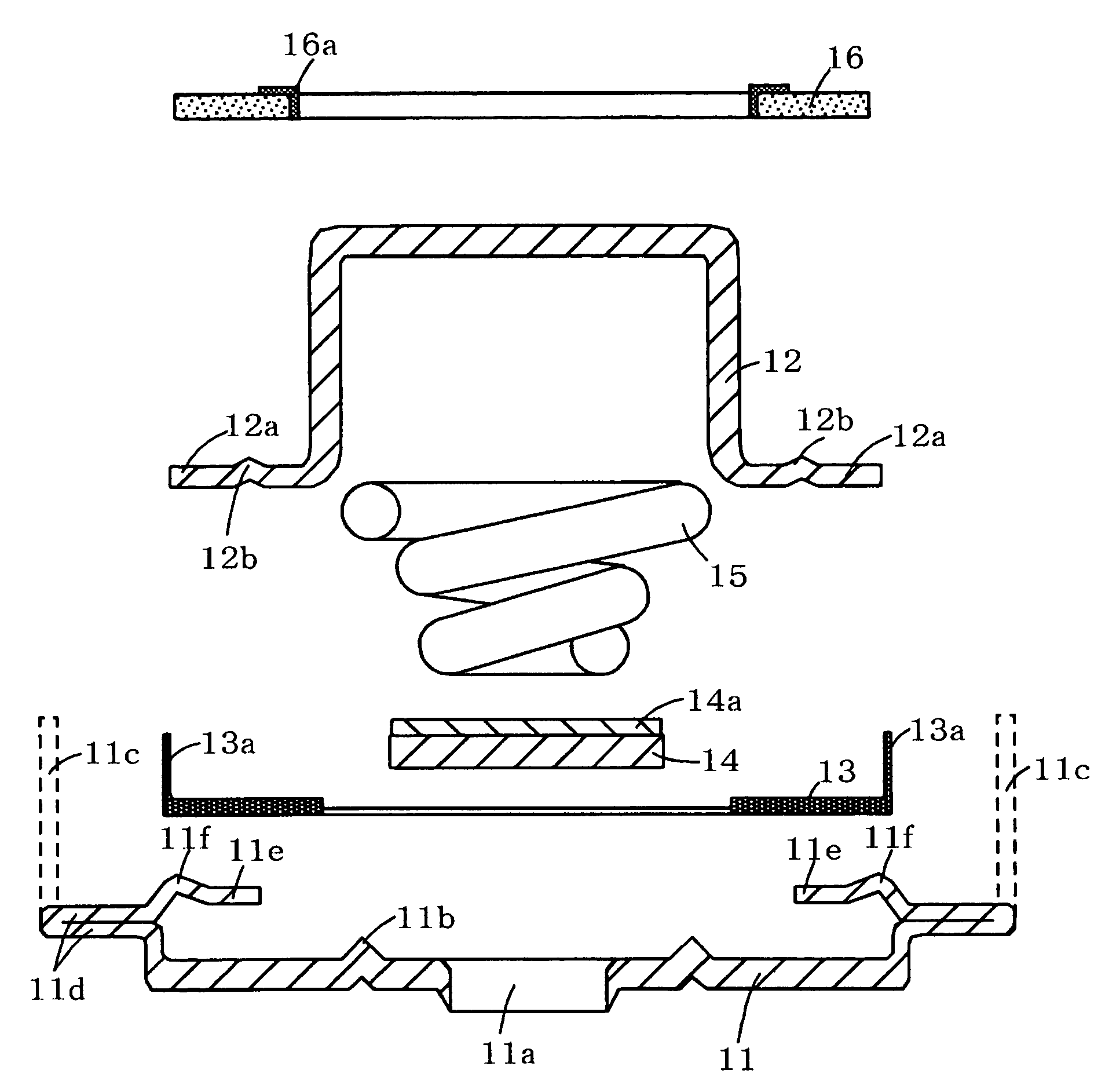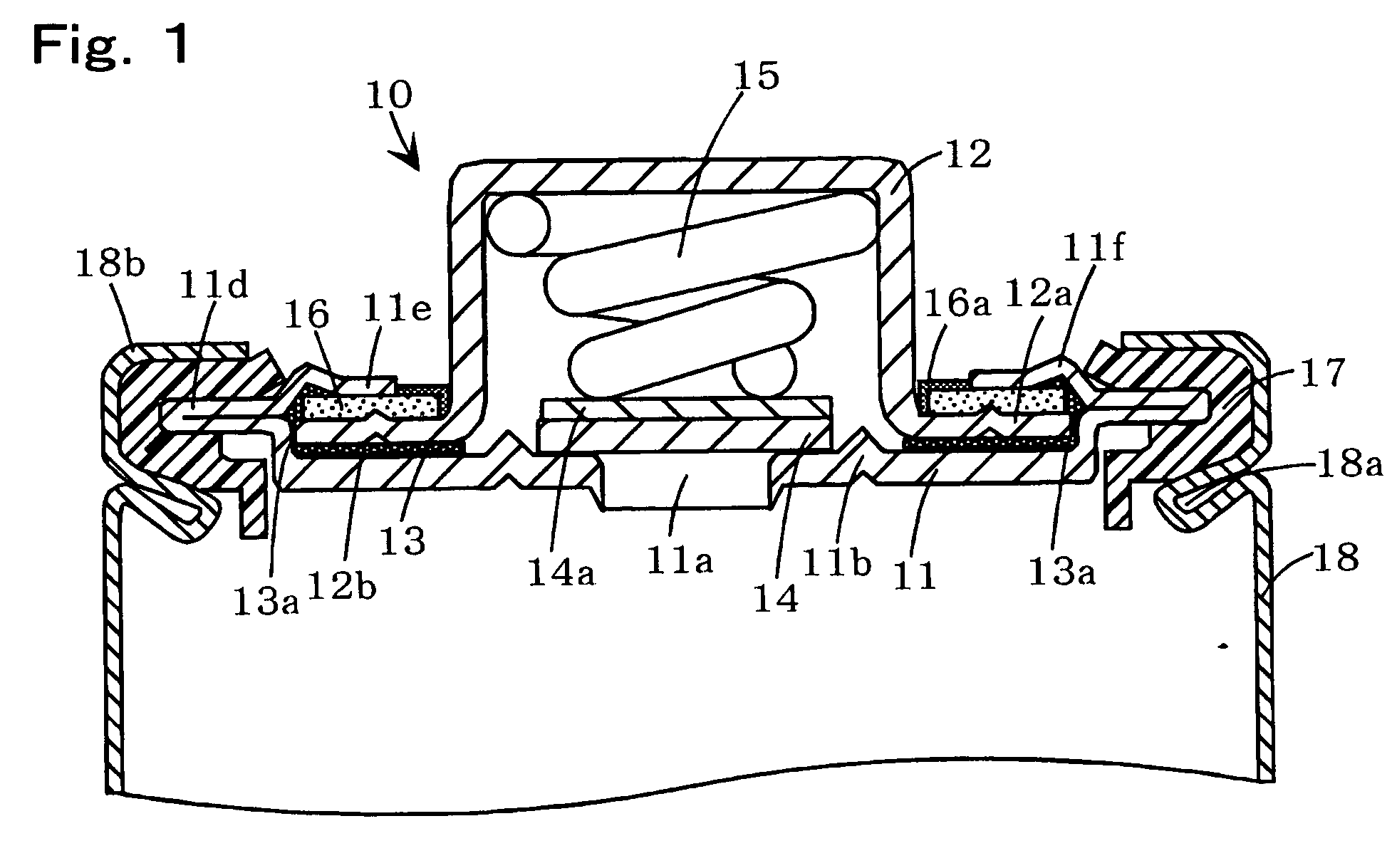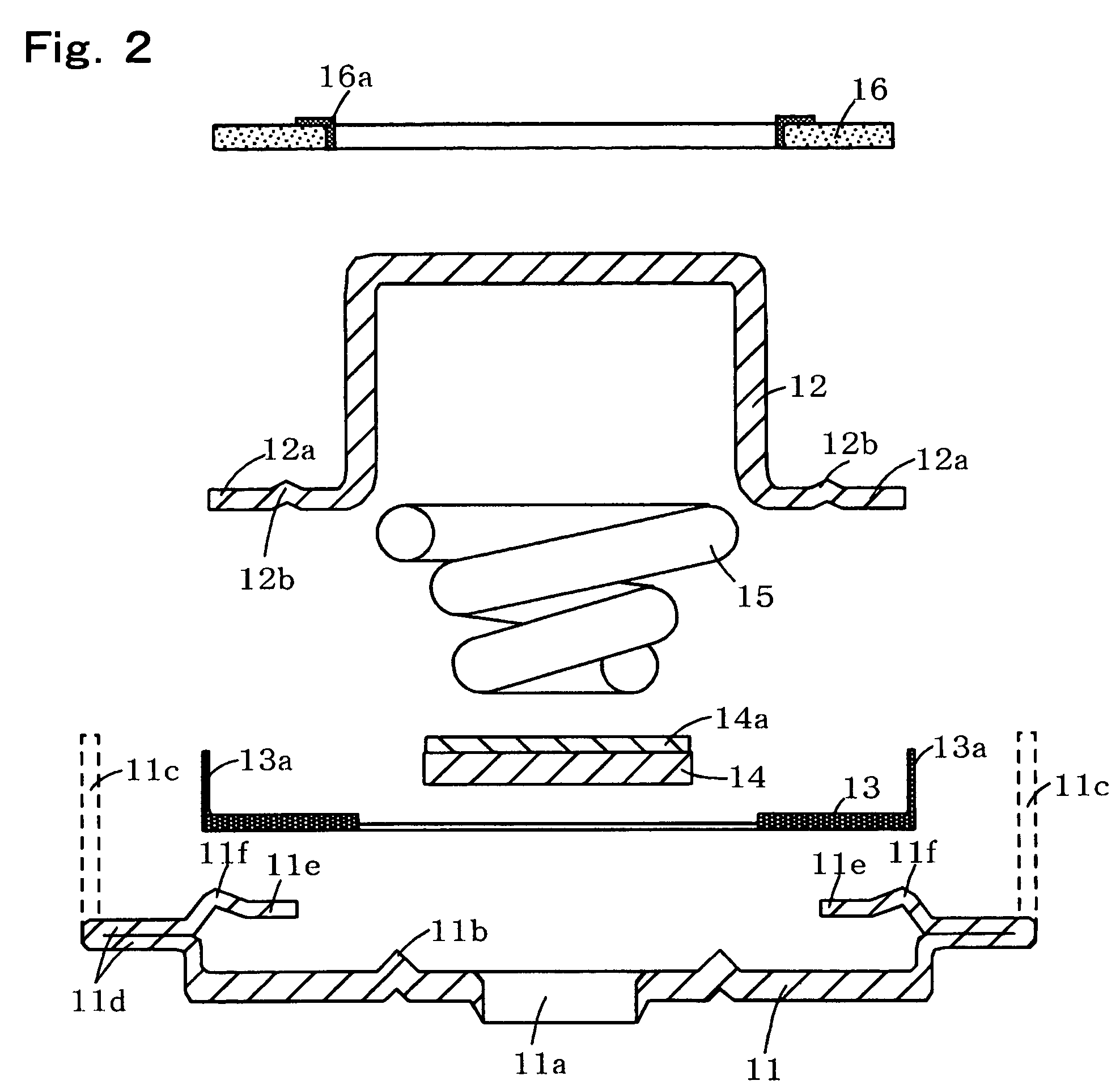Hermetically sealed battery
- Summary
- Abstract
- Description
- Claims
- Application Information
AI Technical Summary
Benefits of technology
Problems solved by technology
Method used
Image
Examples
Embodiment Construction
[0027] Preferred embodiments of the present invention will be described hereafter as applied to a nickel-hydrogen battery with reference to FIGS. 1 and 2. Note that the present invention is not restricted to the following embodiments, as proper modification and variation thereof is possible without changing its gist. FIG. 1 is a sectional view typically showing an essential part of a hermetically sealed battery comprising an opening-sealing unit mounted on the opening of an outside can, and FIG. 2 is an exploded view showing components of the opening-sealing unit illustrated in FIG. 1.
[0028] 1. Opening Close Unit
[0029] As shown in FIGS. 1 and 2, the opening-sealing unit 10 according to the present invention comprises a bottom plate 11 for sealing the opening of the outside can 18, a positive electrode cap 12 serving as a positive electrode terminal and forming a space (valve chamber) for housing a pressure valve therein, an insulation ring 13, a resilient valve 14 having a nickel-...
PUM
 Login to View More
Login to View More Abstract
Description
Claims
Application Information
 Login to View More
Login to View More - R&D
- Intellectual Property
- Life Sciences
- Materials
- Tech Scout
- Unparalleled Data Quality
- Higher Quality Content
- 60% Fewer Hallucinations
Browse by: Latest US Patents, China's latest patents, Technical Efficacy Thesaurus, Application Domain, Technology Topic, Popular Technical Reports.
© 2025 PatSnap. All rights reserved.Legal|Privacy policy|Modern Slavery Act Transparency Statement|Sitemap|About US| Contact US: help@patsnap.com



